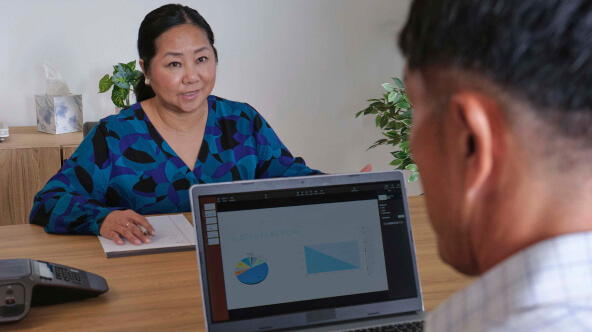Community health centers are rising to meet growing challenges but need better support to thrive.
Federally qualified health centers (FQHCs) and community health centers (CHCs) have long stood as pillars of equitable care, providing essential services to communities of all sizes from coast to coast. Today, CHCs are being called on to meet growing patient needs, often with shrinking resources and greater regulatory demands, all while navigating a rapidly changing healthcare environment.
Rising patient complexity, limited resources, changes in funding, and increasing administrative demands make it harder than ever for providers to deliver the high-quality, whole person care their communities rely on.
At athenahealth, we understand these challenges. Here, we’ll unpack what’s stacked against FQHCs and CHCs, and explore some opportunities to help them deliver on their mission in every moment of care.
What’s driving change in community health
Today’s CHCs must deliver care within a complex healthcare landscape shaped by both familiar pressures and new challenges, including:
Shifting patient needs and expectations
Patients are no longer just seeking care — they expect convenient, coordinated, and digitally connected experiences. Many rely on their local CHC for a range of services including primary care, behavioral health, dental, and social support. Meeting these multifaceted needs requires flexible, scalable technology that enables clinicians to provide seamless care, whether in person or virtually.
Today, CHCs are being called on to meet growing patient needs, often with fewer resources and greater regulatory demands, all while navigating a rapidly changing healthcare environment.
Social determinants of health (SDOH)
CHC patients can be deeply affected by social challenges — from housing instability and food insecurity to language barriers and limited access to transportation. These factors directly influence health outcomes and require clinicians to have not only clinical data, but also insight into the broader context of a patient’s life. Recognizing and addressing these factors at the point of care is essential for driving lasting change.
Navigating evolving regulatory requirements
Community health centers are also contending with a fast-moving regulatory landscape that is placing new demands on technology infrastructure. Requirements such as FHIR-based data reporting reflect a broader push for interoperability, data transparency, and real-time insight into care delivery and outcomes.
While these updates aim to streamline public health reporting and improve health equity, they often introduce complex technical challenges — especially for resource-constrained community health centers. Meeting these mandates requires systems that can automate compliance tasks, integrate across care settings, and submit structured data without manual lift. For many CHCs, this means re-evaluating EHR capabilities and leaning on technology partners who can stay ahead of these changes.
Managing a growing and uncertain Medicaid landscape
Many community health centers serve an expanding Medicaid population, driven by growing enrollment, redetermination cycles, and continued demand for safety-net services. While this expansion reflects the essential role CHCs play in access and equity, it brings with it another level of financial uncertainty.
Reimbursement rates often remain low, and the possibility of Medicaid funding cuts or shifts in government support creates challenges for long-term planning. In this environment, CHCs must balance growing patient demand with the need to maintain sustainable operations, often with thin margins and a heavy administrative load.
Standing out in a more crowded care market
Some CHCs which may have been accustomed to being the primary point of care for their communities are facing competition from new care sites appearing in their neighborhoods, reshaping how and where patients seek care. The rapid rise of ambulatory surgery centers (ASCs) and retail-based clinics — many of which offer extended hours, walk-in convenience, and streamlined digital experiences — has given patients more options than ever. To keep up, CHCs must not only demonstrate high-quality care but also invest in technology and patient engagement tools that reflect the on-demand care expectations of today’s patients.
Lingering effects of the pandemic
Even as the immediate crisis of COVID-19 has receded, its aftershocks remain. Many patients still deal with deferred care and increased medical needs, while staff shortages and administrative burdens continue to weigh heavily on CHC teams. Adding to the strain, the expiration of the public health emergency has put millions at risk of losing Medicaid coverage, making patient outreach and continuity of care even more critical — and complex.
What FQHCs and CHCs need to succeed today
To meet the moment, FQHCs and community health centers need more than a clear mission. They need modern infrastructure that helps them deliver care efficiently, equitably, and sustainably. As CHCs work to serve increasingly complex patient populations, several core capabilities have become essential for both day-to-day operations and long-term impact.
1. A fully integrated patient experience
Some CHCs serve diverse, often high-risk populations, including the uninsured, underinsured, and those with multiple chronic conditions. Many patients face social barriers that disrupt care continuity, from food insecurity to lack of transportation. That’s why CHCs need digital tools that empower patients to take charge of their health. A user-friendly patient portal, mobile-friendly telehealth, and self-service tools allow patients to easily schedule appointments, communicate with care teams, access their health records, and attend appointments remotely from the comfort of their home. These features can contribute to fewer no-shows, greater engagement, and healthier care outcomes.
2. Interoperability that connects the full care ecosystem
Patients often receive care from multiple care settings — primary care, behavioral health, dental, hospital visits, and community-based programs. CHCs must be able to see the full picture of a patient’s health, regardless of where care is delivered. Interoperability that supports timely, accurate data exchange is key for accessing data from external sites such as labs, imaging, hospitalizations, and specialist notes. Without it, clinicians may be forced to work with incomplete information, which can compromise care and lead to unnecessary duplication of effort.
3. Support for whole-person, chronic, dental, and specialty care
Managing chronic conditions like diabetes, hypertension, and mental health disorders requires longitudinal tracking, goal setting, and coordinated care. CHCs need platforms that unify clinical records, support customizable care plans, and allow specialists, dentists, and primary care to collaborate without friction. To make the most of lean staff managing complex care, CHCs also benefit from features like ambient documentation and mobile flexibility to reduce workload.
4. Resilience against reimbursement and funding volatility
CHCs face increasing financial strain from declining reimbursements, uncompensated care, and complex billing requirements, especially for Medicaid and uninsured patients. Value-based care models (VBC) and alternative payment structures offer promise, but they also require data-driven reporting, quality tracking, and accurate coding — which many legacy systems simply don’t support. To remain viable, CHCs need practice management solutions that optimize financial performance, simplify RCM workflows, and support multiple billing models, including PPS, fee-for-service, and VBC contracts.
5. Support for value-based care success
As reimbursement models shift from volume to value, CHCs face growing pressure to show outcomes while caring for high-need populations. Value-based care can drive long-term sustainability — but only with the right infrastructure.
Success in a VBC model requires more than a traditional EHR. CHCs need tools to close care gaps, track population health, manage accurate risk adjustment coding like HCC/RAF, and report on quality measures. Efficient care team coordination and aligning financial health with outcomes are also critical when the CHC is sharing risk or responsible for proving value.
With the right forward-looking technology, CHCs can turn VBC payment models into an opportunity — boosting impact, improving care, and unlocking new revenue streams.
6. Smarter technology for evolving compliance demands
CHCs need technology that keeps pace with shifting regulations while simplifying, not complicating, day-to-day operations. Structured, FHIR-based interoperability, TEFCA standards, and patient-level data reporting are on the horizon. CHCs need EHR systems that automate compliance reporting and ready centers for future requirements.
At the same time, broader policy changes — like the end of the public health emergency, enforcement of the No Surprises Act, and new good faith estimate rules — mean CHCs must remain agile. That requires tools that don’t just keep them compliant but actively ease the transition. Features like automated cost estimates, built-in sliding fee scale logic, and advanced privacy controls (especially for adolescent and behavioral health care) are no longer optional. With adaptive, forward-looking technology, CHCs can spend less time reacting to change and more time serving their communities.
Introducing athenaOne® for Community Health Centers
At athenahealth, we recognize that CHCs aren’t just another healthcare setting — they are a lifeline for millions. That’s why we’ve created athenaOne® for Community Health Centers, a purpose-built solution grounded in our experience working alongside federally qualified health centers.
Building on over a decade of partnership with the FQHC community — and currently serving nearly 20% of FQHCs nationwide1 — this specialized version of our flagship software and services solution, athenaOne, extends our long-standing commitment by offering even deeper support for the unique workflows, billing structures, reporting requirements, and care models that CHCs depend on. AI-powered, future-focused capabilities also save physicians time, improving care and alleviating burnout.
Our solution is designed to address the clinical, administrative, and operational complexities unique to CHCs — offering a unified experience that connects everything from scheduling and documentation to billing and patient communication and the insights of more than 160,000 providers across our network.2
Most importantly, our approach is guided by empathy and partnership. We don’t just deliver software — we work alongside CHCs to understand their mission, listen to their needs, and help them build sustainable systems that empower staff and improve outcomes for every patient they serve.
Get to know the Healthcare IT solution that puts community health first
Learn more about the features and functionality behind athenaOne for Community Health Centers — and how they’re purpose-built to help your organization thrive.
Explore athenaOne’s capabilities for community health centers.
More medicare & medicaid resources
Continue exploring
1. Based on athenahealth data as of Dec. 2024; includes FQHCs, Look-a-Likes and Tribal/Urban Indian Health Centers; M140
2. Based on athenahealth data as of Dec. 2024; M010











